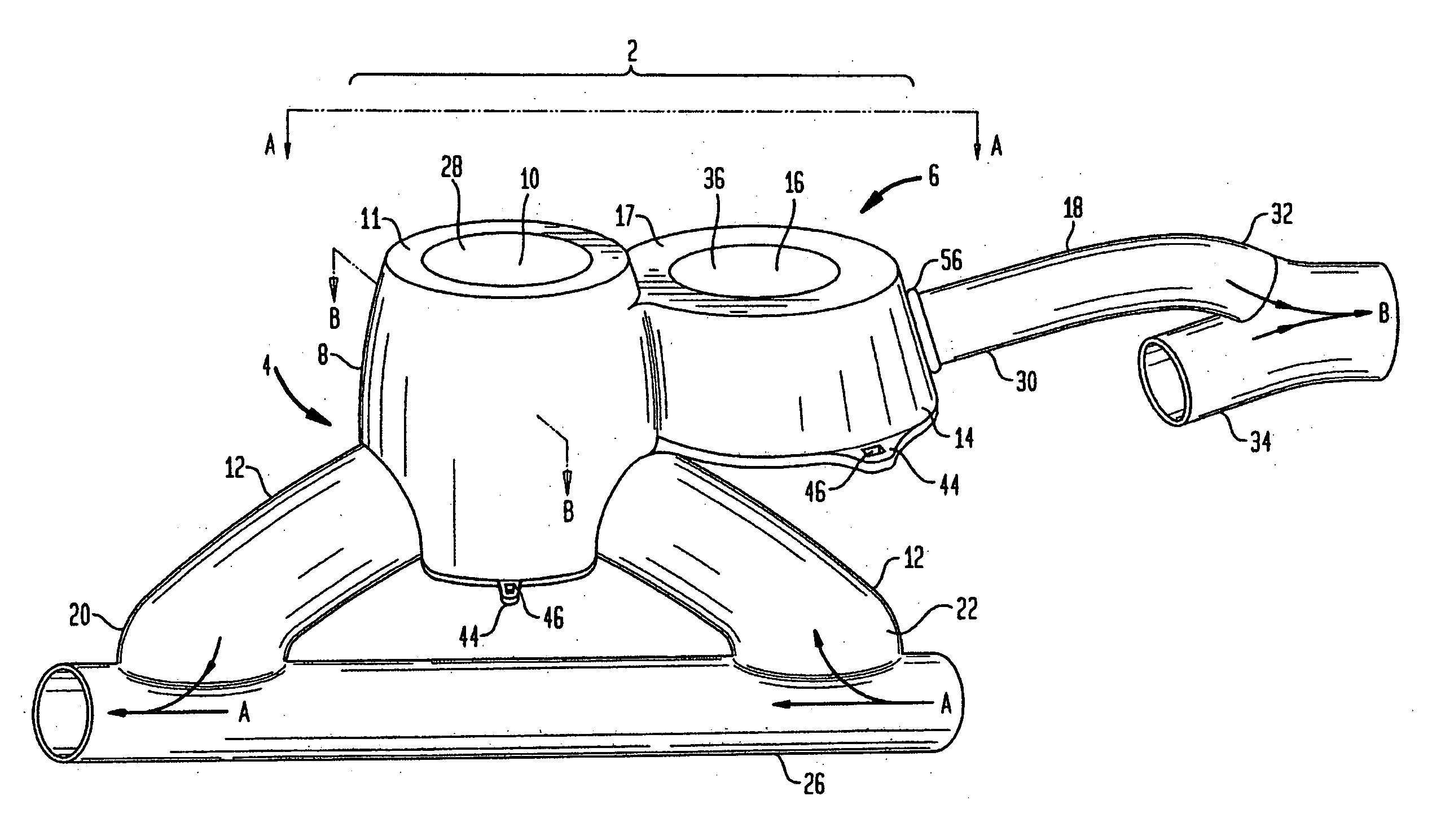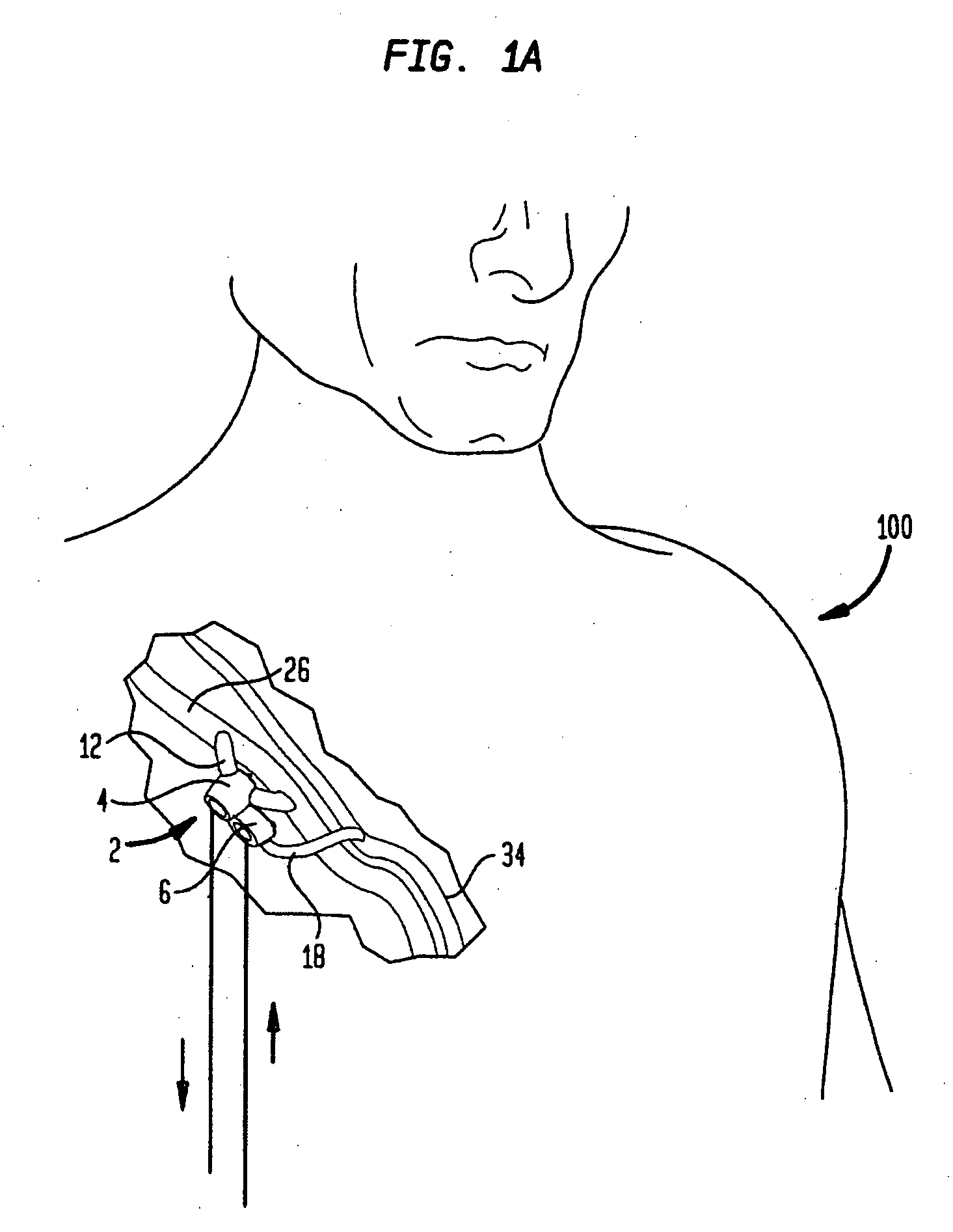Implantable dialysis access port
a technology of access ports and dialysis, applied in the field of access ports, can solve the problems of affecting the normal life of patients, causing a great burden on patients, and affecting the normal functioning of life, and achieve the effect of preventing the compression of the vessel
- Summary
- Abstract
- Description
- Claims
- Application Information
AI Technical Summary
Benefits of technology
Problems solved by technology
Method used
Image
Examples
Embodiment Construction
[0056] In the following is described the embodiments of the implantable dialysis access port of the present invention. In describing the embodiments illustrated in the drawings, specific terminology will be used for the sake of clarity. However, the invention is not intended to be limited to the specific terms so selected, and it is to be understood that each specific term includes all technical equivalents that operate in a similar manner to accomplish a similar purpose.
[0057] Referring to the figures, FIG. 1 depicts a diagrammatic view of a typical hemodialysis system utilizing one embodiment of the implantable dialysis access port 2 of the present invention. As shown in FIG. 1, the implantable dialysis port 2 may be implanted into the chest area 100 of the human body. The implantable dialysis port 2 may also be implanted into other areas of the body, so long as it is implanted in reasonable proximity to a medium sized artery, typically between 6 and 8 mm, for use with the implan...
PUM
 Login to View More
Login to View More Abstract
Description
Claims
Application Information
 Login to View More
Login to View More - R&D
- Intellectual Property
- Life Sciences
- Materials
- Tech Scout
- Unparalleled Data Quality
- Higher Quality Content
- 60% Fewer Hallucinations
Browse by: Latest US Patents, China's latest patents, Technical Efficacy Thesaurus, Application Domain, Technology Topic, Popular Technical Reports.
© 2025 PatSnap. All rights reserved.Legal|Privacy policy|Modern Slavery Act Transparency Statement|Sitemap|About US| Contact US: help@patsnap.com



